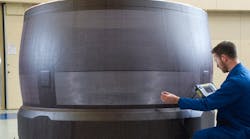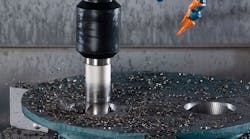Nexcelle, a manufacturer of carbon-composite aircraft engine structures, has started producing critical components for two related engine programs. Manufacturing is in progress at two plants operated by Nexcelle’s joint-venture partners, in France and the U.S.
Both partners specialize in aircraft engine nacelles, thrust reversers, and other aero-structures. “Nexcelle’s goal of introducing a new generation of integrated propulsion systems has rapidly evolved from concept to reality, with its parent companies now well into the manufacturing of actual nacelle hardware,” according to Huntley Myrie, the company’s president.
In Le Havre, France, at Aircelle’s plant, the company is manufacturing the 330-degree carbon composite inner skin for the LEAP-1C engine’s O-Duct. This large, complex element was produced via a specialized molding process being employed for the first time on this program.
The LEAP-1C engine is a high-bypass turbofan engine being developed by CFM International LEAP and due to make it first commercial appearance in 2016 on Commercial Aircraft Co. of China’s (Comac) 150-seat C919 twin-engine jet.
CFM International LEAP is co-owned by GE Aviation and French engine builder Snecma, and the LEAP engines incorporate high volumes of composite materials.
The one-piece composite O-Duct is part of the integrated propulsion system developed by Nexcelle to replace the two-piece “D” doors on a traditional thrust reverser. When deployed, the O-Duct moves aft toward the reverse thrust position, eliminating the need for drag links in the engine’s secondary flow-path.
Three of the skins have been built to date by Aircelle, each one meeting LEAP’s specifications for the engine.
The other Nexcelle partner is Middle River Aircraft Systems (MRAS), a General Electric subsidiary in Baltimore. It has produced a unitized component that fits inside the air inlet of the GE Passport turbofan engine, directing airflow into it. This 360-degree, carbon-composite bonded component is built by Middle River Aircraft Systems, near Baltimore.
The GE Passport is another high-bypass turbofan engine design, originally called TechX, being developed by GE Aviation in parallel with the larger LEAP engine. It’s designed to power larger business jets and regional jets, such as the Bombardier Global 7000 and 80000 aircraft. It is planned as a replacement for GE Aviation’s CF34 engine.
“At both Middle River Aircraft Systems and Aircelle, the industrial processes are in full swing with components taking shape, production drawings being released, tooling in preparation, and manufacturing cells being readied,” Myrie said.








